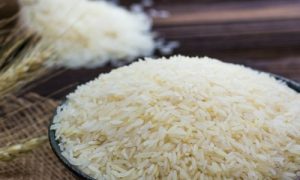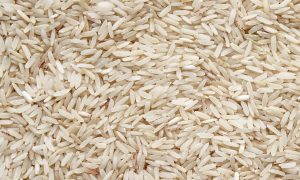Philippine rice stocks grow 14% in May

The Philippines’ rice inventory rose to 2.37 million MT in May, a 14% year-on-year increase, driven by a 472% surge in National Food Authority stocks. Household stocks rose 35%, while commercial stocks fell 30%. The agriculture department credits this rise—and programs like the ₱20/kilo rice push—for helping reduce inflation to 1.3% in May.
The country’s rice inventory jumped by 14 percent to over two million metric tons (MT) in May, aligning with the government’s ongoing efforts to ensure food sufficiency and stabilize prices.
In its latest report, the Philippine Statistics Authority (PSA) said rice stocks stood at 2.37 million MT as of May 1, up from 2.08 million MT in the same month last year.
Month-on-month, the volume of rice stocks inched up by one percent from the 2.34 million MT recorded in April.
PSA data showed that 49.4 percent of the total rice stocks were from households, 33.9 percent were from the commercial sector, and 16.8 percent from the warehouses of the National Food Authority (NFA).
As of May 1, rice stocks in households increased by 35 percent to 1.17 million MT compared to 863,770 MT in the same month last year.
Meanwhile, rice inventory in the commercial sector slumped by 30 percent to 803,440 MT versus last year’s 1.14 million MT.
NFA stocks, on the other hand, saw a massive jump from 69,350 MT last year to 397,210 MT—a staggering 472-percent hike.
Compared to April data, rice stocks from NFA depositories surged by 15 percent. Rice inventory in the commercial sector and households, however, fell by two percent and 0.3 percent, respectively.
The Department of Agriculture (DA) has been strengthening its efforts to secure a strong rice supply to help lower prices of the staple, which is seen as integral in slowing down inflation.
In a statement last week, Agriculture Secretary Francisco Tiu Laurel said it is the clear directive of the Marcos administration to ensure that food is “sufficient and affordable.”
This year, the DA has been implementing programs such as the maximum suggested retail price (MSRP) on rice and the ₱20-per-kilo rice initiative, which empowers the NFA to significantly ramp up purchases of rice from local farmers, alongside its aim to lower prices.
Laurel attributed the steady decline in rice prices as a key driver in the slowdown of the headline inflation in May, which logged 1.3 percent—the lowest since the 1.2 percent in November 2019.
National Statistician Claire Dennis Mapa said the recent adjustments in retail rice prices are expected to influence inflation through at least August.
Based on PSA data, rice accounts for ₱9 of every ₱100 spent by the average Filipino. This figure doubles among the bottom 30-percent income households.
Further, the statistics agency said the country’s corn stocks as of May 1 went down by six percent to 671,100 MT from 710,720 MT in the previous year.
On a monthly basis, corn inventory rose by three percent compared to April’s 653,350 MT.
Of the total inventory, 84.5 percent of the corn were from the commercial sector, while the remaining 15.5 percent were from households.
Corn stocks in households recorded 104,090 MT, 82-percent higher than the 57,140 MT last year.
Commercial corn stocks, meanwhile, declined by 13 percent to 567,020 MT from 653,580 MT in 2024.
In comparison to the April data, corn stocks in the commercial sector went up seven percent. On the other hand, corn stocks in households dipped by 17 percent.
To Read more about Rice News continue reading Agriinsite.com
Source : MB
















